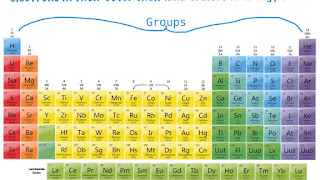Tiny Wonders / Atom
Tiny Wonders
What is an Atom?
ATOMS ARE THE VERY SMALL BITS or particles of the thing of
which any substance is made. They are too small to be seen. Two billion atoms
would fit on the dot that is on the top of this 'i'. Scientists earlier thought
atoms were the tiniest things in the universe, like hard balls that could never
be split or destroyed. But now, they know that atoms are more like clouds of
energy, mostly empty space, containing even tinier sub-atomic' particles.
Inside an atom
At the center of every atom, there is a dense core or 'nucleus'
having two kinds of tiny particles protons and neutrons. Around the nucleus, there are even tinier particles called electrons that move around at the speed
of light.
Size of atoms
Atoms weigh about 100 trillionths of a trillionth of a gram
and are about a ten-millionth of a millimeter big. The smallest atoms are the hydrogen
atoms.
Helium nucleus
One of the smallest nuclei of an atom is that of an atom of
helium. It combines two protons with two neutrons. However, it is not as small
as that of hydrogen.
An Inside an atom
Atoms do not actually appear like this, but then it is a good
way to consider them like this. Most of an atom is empty space, but there is a
nucleus of protons and neutrons in the center, held together by special nuclear
forces. The electrons move around the outer side, held firmly by the Opposite
electrical charge on the protons.
Electrical charge
Protons attract electrons means they have a 'positive' electrical
charge. Attract protons means they have a 'negative electrical charge. Neutrons
do not have any charge. The number of protons and electrons in most atoms is
the same which is why their charges balance out. The charge on electrons drives
them apart. The electrons on an atom would fly off if they were not attracted
to the protons.
Ion
An ion is a positively charged (cation) atom that has either lost one or more electrons,
or a negatively
charged (anion) atom
that has gained one or
a few electrons.
Covalent bond
Atoms are stable only when they have a full set of electrons
in their outer shell. Atoms that have too many or too few electrons in their
outer shell can get a full set by sharing electrons with other atoms. This
sharing makes a covalent bond.
Ionic bond
Atoms are stable when they have a full set of electrons in
their outer shells. They can get this by bonding with other atoms to make
molecules. In an ionic' bond, One atom gives an electron to the other atom and
becomes negatively charged. Thus the atoms are then bonded by mutual electrical
attraction. That's how sodium atoms and chlorine atoms bond together to make
salt molecules.
Molecules
Molecules are the smallest particles of a substance that can
exist on their own. Those atoms that cannot exist by themselves join up with
others either of the same kind or with another kind and form chemical
compounds.
Kinds of sub-atomic particles
There are at least 200 kinds of sub-atomic particles, other than
electrons, protons, and neutrons. But most sub-atomic particles are created in
special conditions and exist only for a split second.
Smallest particles
Protons are made up of very small particles known as quarks.
Electrons are also very small. But the smallest of all particles are known as
neutrinos.









Comments
Post a Comment